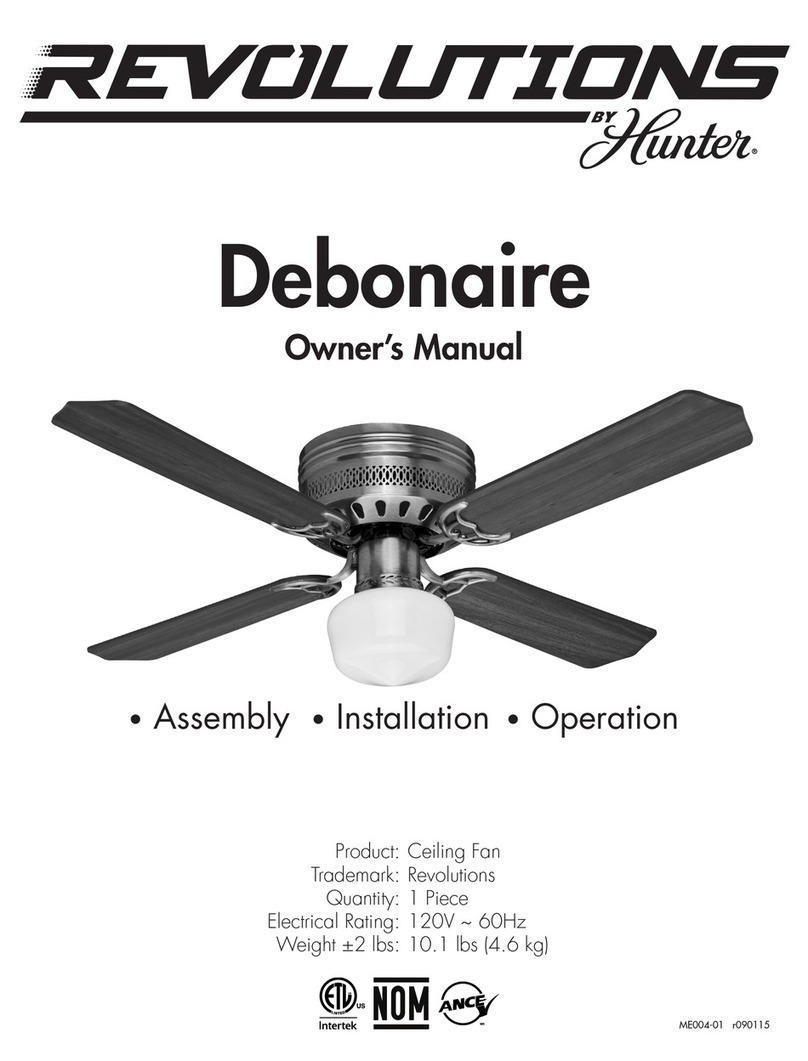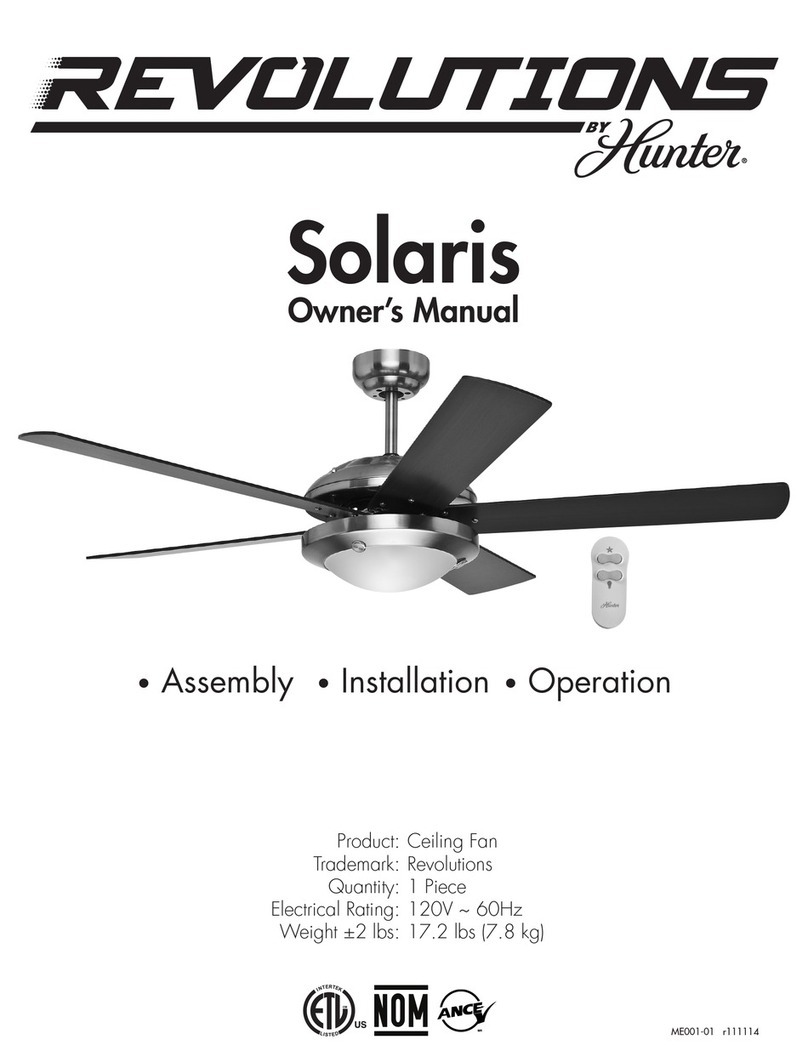Fan will not start
CAUTION: Make sure main power is switched off before you carry out these checks.
1. Check the main and branch circuit fuses or contact breakers.
2. Check that the power supply wires to the fan are secure.
3. Check that the reverse switch is firmly in the up or down position.
Fan sounds noisy
Allow a break-in period of 24 hours. Most noises associated with a new fan will disappear after
this period.
1. Check to make sure all screws to the fan motor housing are secure (but not overly tight).
2. Check mounting plate screws are tight and securely fitted to ceiling joist or ceiling support.
3. Check that the screws which attach the blade holder arms are tight.
4. Ensure that the screws holding the lamp shade are securely tightened. Check that the lamp is
properly fitted to the lampholder.
5. A dimmer switch should not be fitted to this ceiling fan. If this ceiling fan is connected to a
dimmer switch, it will make noises when the fan light is switched off. Remove the dimmer
switch.
Fan wobbles or shakes excessively
Note: a small amount of wobble is natural and should not be considered a problem.
All blades are weighed and grouped by weight. Natural wood varies in density which could
cause the fan to wobble even though all blades are weight matched. The following procedures
should eliminate most of the wobble. Check for wobble after each step.
1. Check that fan blades are screwed firmly into the blade holder arms.
2. Check that all blade holder arms are tightened securely to the fan housing.
3. Most fan wobble problems are caused when blade tracking levels are unequal. Blade tracking
may be checked simply by using a length of timber. Place the timber vertically against the
ceiling and even with the outside leading edge of the blade. Mark the distance of the edge of the
blade to the ceiling. Turn the blades slowly by hand to check the remaining blades. If a blade is
not in alignment, the blade holder arm may be gently bent up or down to line up with the other
blades. Allow the fan to operate for ten minutes to see if the problem is resolved.
4. Make sure the mounting plate is securely fixed to the ceiling joist.
5. Ensure that the ball joint engages with the groove in the ceiling canopy.
Do ensure that the ceiling joist or ceiling support will hold the moving weight of the ceiling fan.
Do ensure that all electrical connections are in accordance with relevant safety and
government regulations.
Do use or consult a qualified electrician if you are uncertain about wiring the ceiling fan.
Do use a qualified electrician for installing the ceiling fan to a concrete ceiling.
Do switch off the fan before using the reverse switch. Failure to do so could damage the
fan.
Don't use the ceiling fan and open gas heating appliance in the same room at the same
time. Otherwise, harmful gases might be circulated.
Don't install in rooms where the distance between the floor and the blades is less than 2.1m
(7 ft). Allow at least 500 mm (1.6 ft.) between the blade tip and any wall or furnishings.
Don't install in bathrooms or areas where the fan may become wet.
Don't insert anything into the fan blades while they are rotating.
Don't use a dimmer switch with this ceiling fan. Doing so could damage the dimmer and
the fan.
Don't use this fan with any speed control device as it could be a fire risk.
Don't use the ceiling fan for any other purpose than that described in this instruction sheet.
Don't modify or alter the ceiling fan.
























